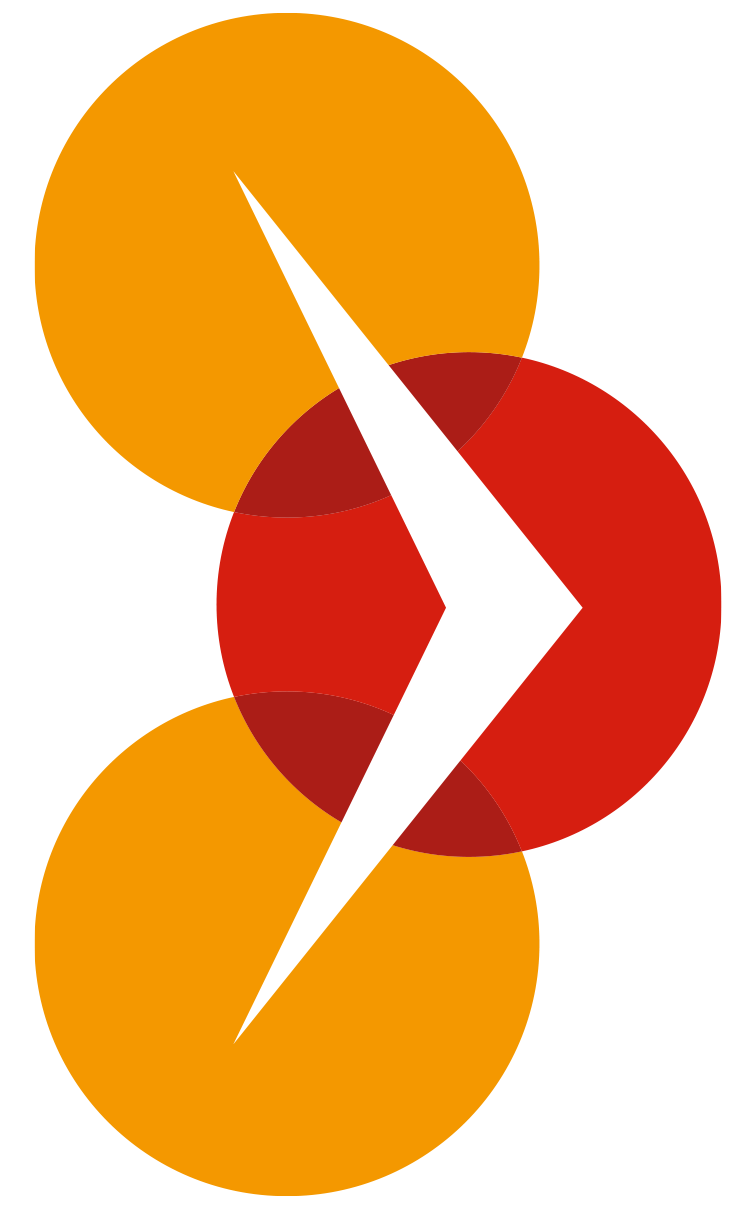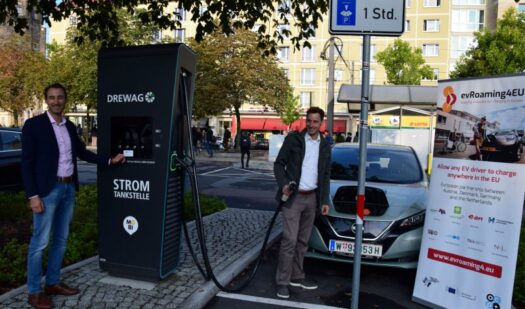Driving with your e-car from Vienna to the Netherlandish North Sea, to Hamburg, or to Copenhagen: Will it work? The project evRoaming4EU establishes new international charging opportunities. Stromnetz Hamburg (Germany) and ENIO (Austria) have just successfully finished their first field test, which consisted of an ENIO research car travelling from Vienna to Dresden.
Public charging stations are already available and well developed in bigger cities and along the motorways. Many e-drivers already know which contracts are necessary to use the common charging stations while travelling through the local regions. But what about crossing the border to our European neighbouring countries? How do you find the charging stations there, and how do you pay? Considering not every trip ends at the border, the European Commission has been funding the R&D project evRoaming4EU since 2018.
The main goal is seamless cross-border access to international charging infrastructure. The prices and tariffs should be transparent, similar to data roaming. For this, an open and independent roaming protocol is used, the so-called Open Charge Point Interface (OCPI). As part of evRoaming4EU, OCPI was further developed and implemented on regional as well as transnational level. The involved project partners from Germany, Denmark, the Netherlands and Austria have already started several pilots to demonstrate the everyday suitability of OCPI.
Meeting halfway – a test under real conditions
In Dresden, the energy supplier DREWAG / ENSO operates public available charging stations that are connected to the IT backend system of Stromnetz Hamburg. It is around 480 km from Vienna to Dresden and Hamburg is twice as far away. That is why Dresden was the ideal destination and the 150-kW charging station on Pirnaischer Platz a perfect meeting point.Jan Voelkel (Stromnetz Hamburg) drove from Hamburg to Dresden to welcome the ENIO research car there. Markus Litzlbauer from ENIO started in Vienna with a Nissan e-car and his Austrian RFID card and made his way to Saxony. Jan Voelkel’s drive was also electrical but rather unspectacular. Hamburg-Dresden on the ICE train, change once in Berlin, five minutes late.
Markus drove from Vienna via Brno and Prague to Dresden and had to charge three times. Unfortunately, not conveniently via OCPI roaming and the Austrian RFID card, but at least by means of direct payment (mobile phone and credit card). 25 km before Dresden it was exciting again. Due to the crossing of the mountains between Prague and Dresden, the range dropped unexpectedly quickly and it was suddenly impossible to reach the destination directly. With a remaining range of around 10 km, Markus was able to save himself to a DC charging station in Pirna. In the end he reached Pirnaischer Platz after 10.5 hours and with a considerable delay.
Then it got interesting: Does his Austrian RFID card work on the DREWAG / ENSO charging station? It quickly became clear: yes, and perfectly without problems! The authentication was successful, he was able to start and stop the charging process, and all data was transmitted and received correctly. First test passed!
Now ENIO has activated the RFID cards of all their customers and thus completely opened the transnational OCPI connection to all local partners of Stromnetz Hamburg. With this OCPI roaming connection, over 1500 charging processes have already been carried out successfully.
But that’s not the end of the story – it continues
The evRoaming4EU project can make a significant contribution to the success of cross-border roaming and to a further push of electromobility. The project will end in 2020. It is part of the ERA-NET Electric Mobility Europe program. 19 European, national and regional government organizations have set up the ERA-NET funding cooperation to promote electromobility in Europe. The initiative Electric Mobility Europe aims to find operational solutions through a transnational exchange of research and politics.







